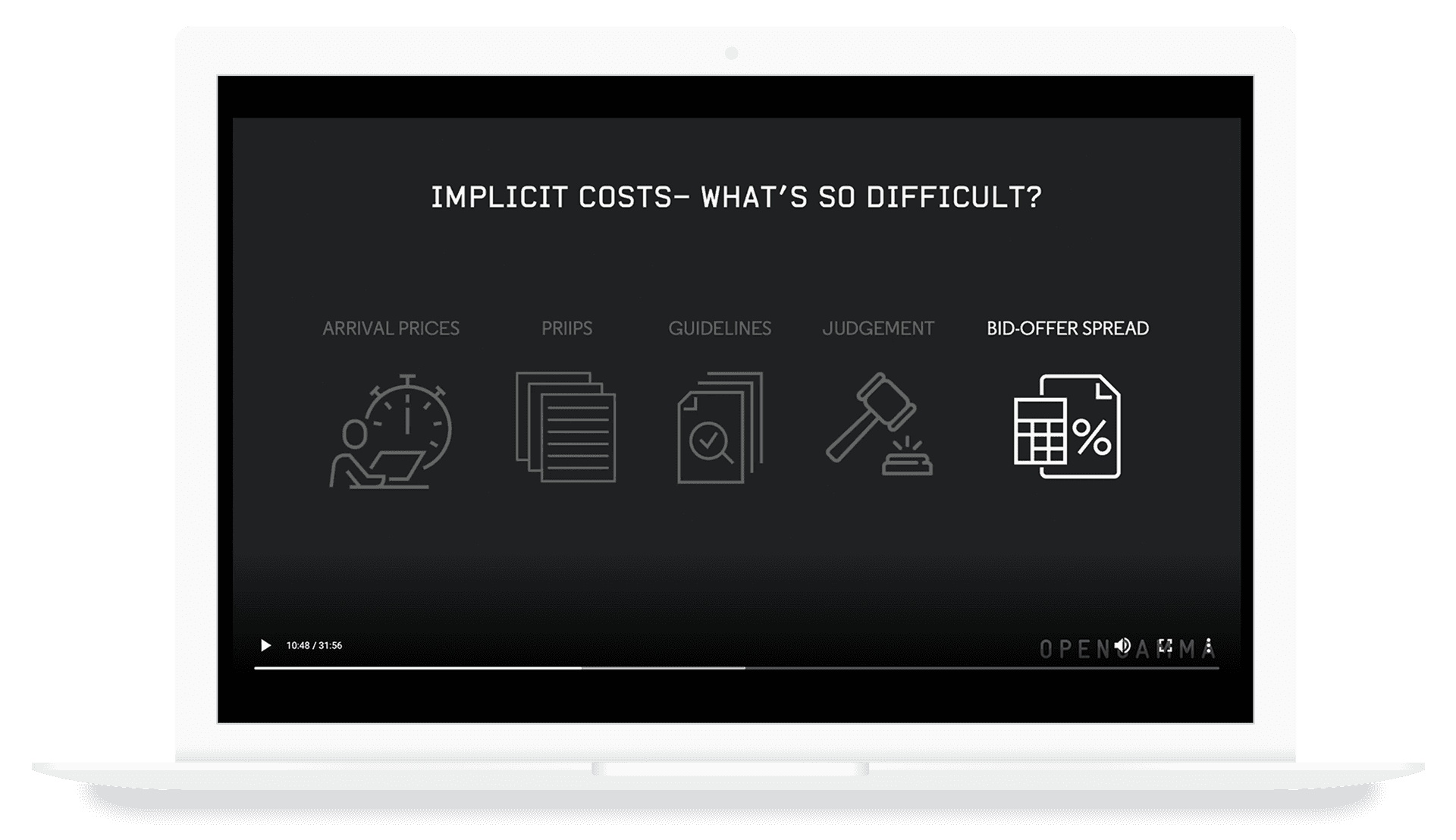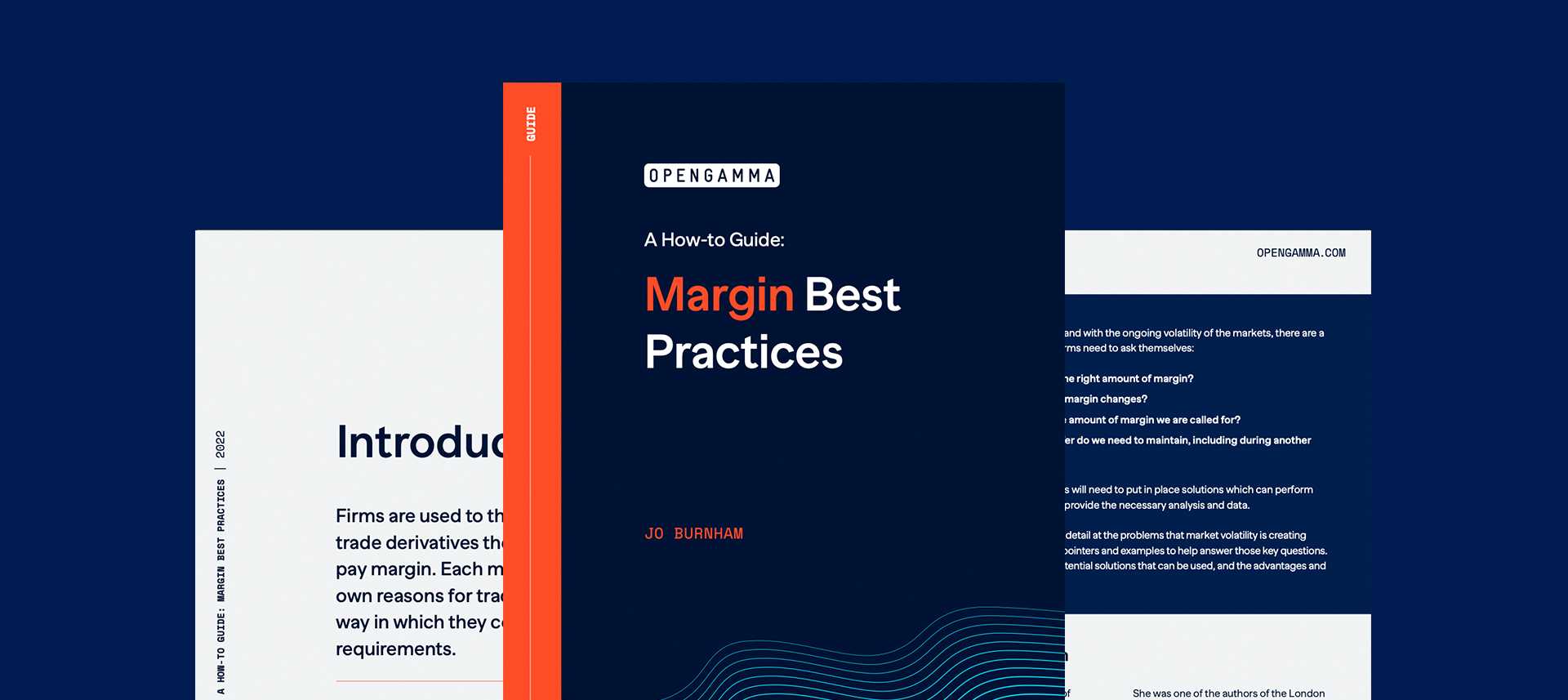Under the transaction cost reporting requirement of MiFID II’s Costs & Charges Disclosure, firms must estimate the implicit bid-offer spread-related costs of all of their traded asset classes.
Compared to the methodology for cash products, the guidelines for derivatives seem broad enough to allow for any reasonable approach i.e. use an average spread under normal market conditions to estimate the bid-offer cost:
However, complications arise in the Q&As, where the issue of how to determine a reasonable average spread is discussed. Here are the key challenges and solutions.
Calculating Implicit Costs For FX Derivatives
Challenge:
The regulation has forbidden the use of single-platform or single-counterparty arrival prices.
“For FX products, the arrival price must reflect a consolidated price, and not simply be the price available from a single counterparty or FX platform”
– PRIIPS, March 2017
Solutions:
- Source historical quotes from another platform.
- Use an estimation framework that captures the average spread of a particular instrument under normal market conditions. This approach applies to derivatives more generally.
Calculating Implicit Costs For OTC Derivatives
Challenges:
An estimation framework would need to take into account all variables that drive the bid-offer spread of each trade.
“ESMA considers an estimation to be reasonable when it includes all variables that directly impact the costs and charges that are expected to be incurred by the client, using actual data to the extent available and making reasonable assumptions otherwise”
– ESMA Q&A on MIFID II and MIFIR investor protection and intermediaries topics, December 2017
Capturing two-way quotes at the time of trade to calculate an average spread for a particular instrument is considered to be an unreliable approach for OTC instruments.
“Spread can vary over time, and it can often be hypothetical in nature i.e. a price to buy might be clear and available to transact, but the simultaneous price to sell might merely be indicative”
– FCA Transaction Cost Disclosure (PRIIPS reference), October 2016
The regulatory body has warned against the concept of using generic spreads.
“It might be possible to provide detailed regulatory guidance that could set out rules to calculate spreads, or to publish a table of data that sets out standard spreads in particular assets. We consider that this would likely be too inflexible, and would fail to create the appropriate incentives as firms would be reporting a generic spread, rather than the spread they have actually incurred”
FCA Transaction Cost Disclosure (PRIIPS reference), October 2016
So, a Suitable Approach For Estimating Average Spreads For Derivatives Would Be:
1. Constructing a bid-offer estimation grid
This will capture all variables that drive the bid-offer spread of each product.
For example, a grid for an IRS swap could have average bid-offer spread estimates for each currency and index swap type, broken up by predefined ranges of DV01 size, tenor and forward- start, since these are all factors that impact the bid-offer spread under normal market conditions.
An example grid for OTC LIBOR Swaps:
2. Calculate spreads using statistical techniques on historical transactional data
By using variables that drive the execution price of each trade against a series of executed prices for buys and sells of similar products, and combining these with proxies to standardise market conditions, a regression can be run to produce average spreads without needing mid-prices for the exact time of trade.




